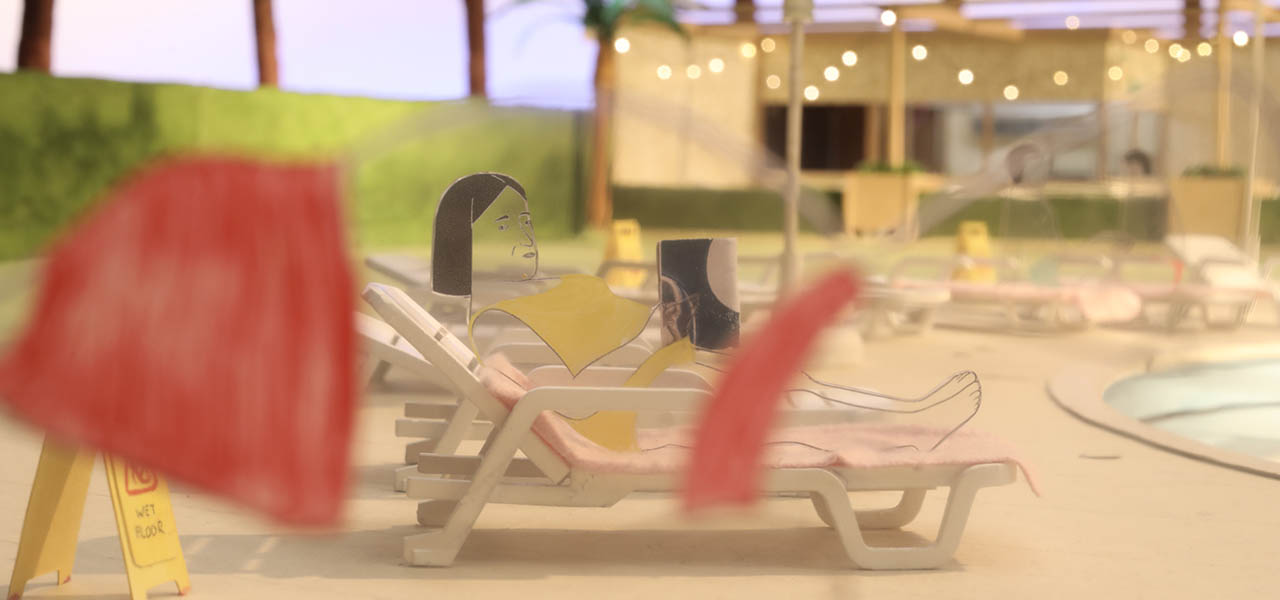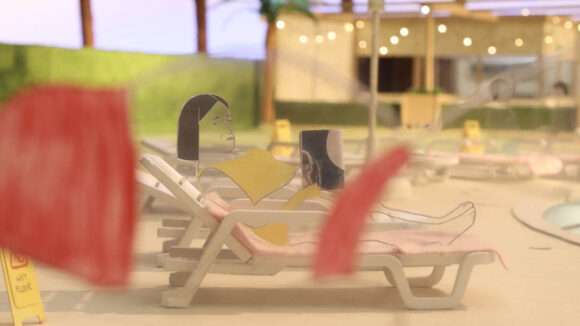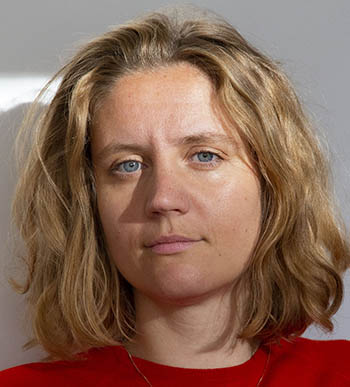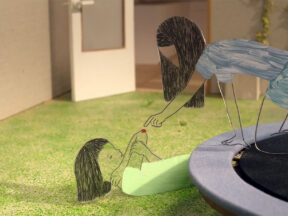

2025 Oscars Short Film Contenders: ‘The Miracle’ Director Nienke Deutz
Cartoon Brew is putting the spotlight on animated short films that have qualified for the 2025 Oscars.
Today’s film is The Miracle from Dutch filmmaker Nienke Deutz and produced by Lunanime, Les Productions de Milou, and Kepler Film. The short qualified multiple times over for the animated short category of the Academy Awards, including by winning the grand prize at Animafest Zagreb and the Gold Hugo for best animated short at the Chicago International Film Festival.
Using transparent cut-out characters in a stop-motion setting, Deutz tells the story of The Miracle hotel, a place where the sun is always out, the food is plentiful, and the opportunities to relax are endless. But how does our protagonist find her place in such a delightful place when she’s constantly confronted with what she longs for and doesn’t have?
Cartoon Brew: What kind of research went into preparing this film? What resources did you use to influence how you approached a sensitive subject like pregnancy envy and uncertainty?

Nienke Deutz: What I wanted to convey with this story was the will to carve out a space for yourself when you are not in a family construction mindset at the age that everyone around you is having babies. Irma’s specific experience is not explained, and I understand that some people may read it as a postpartum situation which is also ok to me, but it is not the specific situation I set out to portray. To create this story, I talked to a variety of people about their experience of not having kids and read a lot about the subject. I also read a lot about the portrayal of pregnancy in pop culture and what this does to our perception and imagination of it.
What was it about this story or concept that connected with you and compelled you to direct the film?
When I started working in this film I was in my mid-thirties and the question whether to have children was very prominent in life, as it becomes for most people at a certain point. Even if you have this answer clean for yourself, there will be people around you dealing with this too, so somehow you have to relate. It can be hard to distinguish between what are your own doubts and what is put on you by your surroundings, and where the two might overlap. Because everyone has their own journey and own pain it can be hard to talk about. I think issues that are hard to talk about can make great subjects for a film because they can bring something to the front that we shy away from in conversation. It has in fact opened up some beautiful conversations with a lot of people after they saw the film. People who don’t have kids or struggle to become pregnant or who are very happy to have none. But I also spoke to people who do have kids, and they opened up about their struggles and doubts in this situation. That was really beautiful because it bridged the gap that sometimes seems to be present between parents and non-parents.
What did you learn through the experience of making this film, either production-wise, filmmaking-wise, creatively, or about the subject matter?
I can make an endless list to answer this question! [laughs] Making this film was a steep learning curve in almost every way. But now that the film has been finished for quite a while, what sticks with me the most and what I’ll take with me in the future is how I want to work. Trusting that I know my own pace, and aiming to create the work conditions that are important for me will be key in my future projects.
Can you describe how you developed your visual approach to the film? Why did you settle on this style/technique?
The style of the film derives from my debut film Bloeistraat 11, where I also use transparent cut-out characters in stop-motion sets. I did not immediately set out to make a film with this technique again. But then I read this paper which talked about how the use of ultrasound and other visualization techniques changed our perception of pregnancy. We now all ‘know’ what an unborn fetus looks like, but actually this is a totally constructed image that no one has ever seen with their bare eyes. I saw a visual symmetry between ultrasounds that make the body of a pregnant person transparent and the use of my cut-out characters that can also become solid or transparent depending on the lighting, and that is what made me re-use this technique.

.png)
